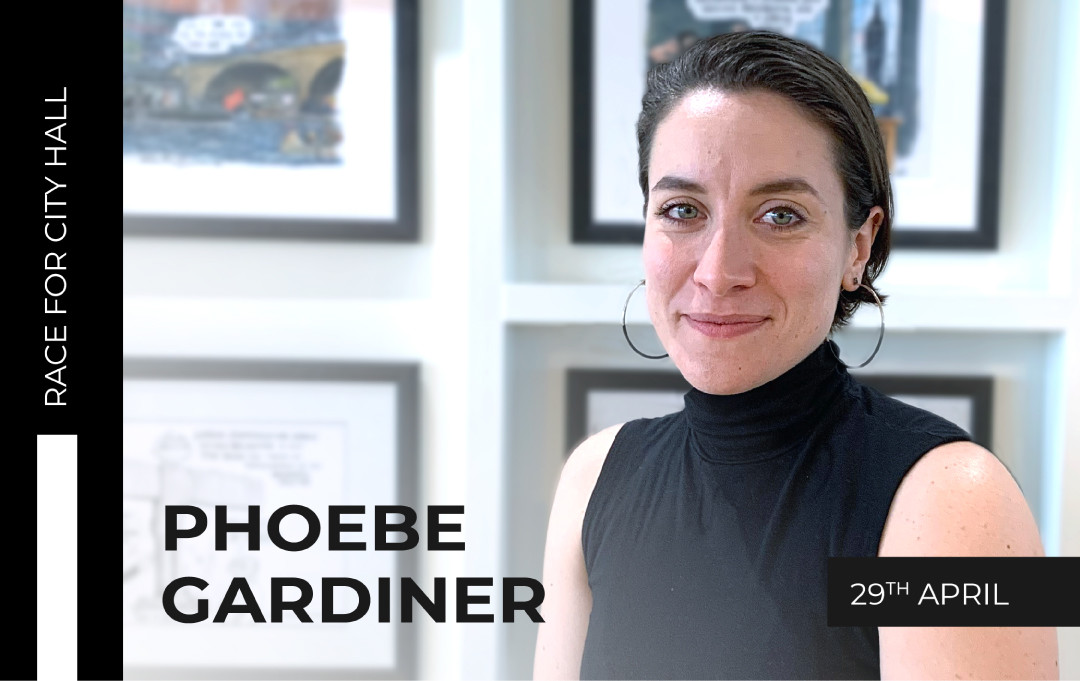Posted: 28.04.24
London's arts & culture in the race for city hall
In March this year, London was voted as the best city for culture in the world. Quieting the cynic in me that questions the legitimacy of a travel agency-led 'report', the commentary around it from leading London media titles is reflective of how London sees itself and its culture. We’re damn proud of our arts & culture offering here - and so we should be.

Say what you like about the traffic, the Tube, rental prices and obviously the weather, not many of us could deny that London has a banging cultural scene. Whatever your flavour - you can go from a Rembrandt to an all-day rave, street art and skateboarding to Saatchi and Sadler's Wells. Our historic and world-famous art institutions remain free to everyone, and there are more new artists and genres seeping out of the city's pores all the time (digi-punk trip-hop, anyone?).
Sadiq Khan knows this. It’s why he’s leant into the power of the creative industries in his recent campaign activity. But when considering his influence in all of this, it’s important to note the environment the Mayor has been operating in.
London's culture scene sits within the wider UK creative industries, broken into subsectors such as design and designer fashion, film, TV, advertising, computer gaming, craft and architecture, defined by the government here. In 2019, pre-pandemic, they contributed £115.9bn in gross value added to the country’s economy: greater than aerospace, automotive, life sciences and oil and gas sectors combined. During the worst of Covid-19, while their economic output fell, they were less adversely affected than the UK economy as a whole, and have been recovering almost four times faster.
Rishi Sunak loves to talk about this as a ‘true British success story’. In reality, the Conservatives have pretty much broken even on culture. They’ve done some good things like the recently announced tax breaks for screen arts in England, but they’ve also cut creative subjects in the state school curriculum, and made some serious blunders like the widely lambasted ‘Fatima’ poster, suggesting studying and working in the creative sector was a waste of time.
And then there’s Arts Council England (ACE). ACE is an 'arms-length' non-departmental public body of DCMS, designed to give financial and infrastructural support to the creative arts in England (there are other bodies for NI, Scotland and Wales) so that art kind of can be for arts’ sake; it can be experimental, research-based, and doesn’t have to chase mainstream audience ticket sales. ACE awards funding from DCMS, the National Lottery and philanthropists, and is split up regionally including London. Over the past decade, ACE's funding pot for London has been drastically reduced - in line with central government levelling up the regions. The last national funding announcement properly cut London’s money in favour of the regions, leading to closures of organisations like South East Dance in Greenwich, and re-locations such as ENO to Manchester.
Sadiq Khan has done well to swim against this tide. He and his office have put some impactful initiatives in place, most of which he pledges to continue in his manifesto. He created the roles of Deputy Mayor for Culture, in which Justine Simons has been visible and vocal, and Night Czar. Although Amy Lamé has received criticism in the role, it’s nonetheless a recognition of the importance of London's nighttime activity and how it sits hand-in-glove with the entertainment economy.
Khan also instigated the London Borough of Culture, which not only spotlights talent from all over London but has the benefit of helping local authorities establish the infrastructure to support art and culture provision going forwards. He launched Creative Enterprise Zones in 2018 to provide permanent affordable workspaces, sector skills and employment for creative businesses. He's put £600m into East Bank at Queen Elizabeth Olympic Park – promising culture, education, innovation and growth. And he's spearheaded campaigns such as his latest London Creates – working with cultural leaders to celebrate London as the world’s most creative capital.
Much of Sadiq's success I believe has come from establishing cultural independence for London. He recognised the importance of London's cultural reputation to its brand, attracting talent, business, investment and tourism. He also saw that to support the creative economy you can't just pipe money to arts and artists - you have to strengthen the built environment around it. In this, he continued a notable legacy of Boris Johnson in regards to the creative industries - a set of guidance published in 2015 to specifically help developers integrate culture into their plans.
You’d think it inconceivable that the next Mayor of London won’t continue to be a champion of the creative and cultural sector, given how many jobs rely on it, and how central it is to London’s global brand. Having said that, Susan Hall, mentions the words ‘culture’, ‘creativity’ and ‘arts’ not once in her manifesto. Which does not inspire confidence.
Maintaining the cultural independence of London will be vital to continue the success story. There will still be potential for reduced funding via the Arts Council – if there’s an Arts Council at all – and there will continue to be steep competition from global cities to be leaders in future creative artforms such as createch and screen arts.
The property and real estate sector can become a useful friend to City Hall here, and vice versa. As London and its cultural hotspots grow, there's a responsibility of developers for cultural place-maintaining rather than making: supporting existing communities whilst building in them, opening the door for artists and creatives of all kinds to help lay down those layers of authenticity that makes London what it is.
This blog can also be read in an amended form in City AM and Arts Professional.
